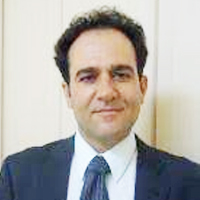Systemic Lupus Erythematosus and Depression Overview
Published on: 3rd January, 2024
Systemic lupus erythematosus (SLE) is a chronic inflammatory multisystem disorder that commonly affects females during their reproductive years. It is characterized by the presence of autoantibodies and immune complex deposition, the etiology is not known but the interaction of an environmental agent in a genetically susceptible individual is thought to be fundamental. SLE most frequently involves the skin, joints, lungs, heart, kidney, and neuropsychiatric manifestations that may occur during the course of the disease. Mood disorders among SLE patients, particularly depression, are common and important psychiatric manifestations of the disease, in addition to their high incidence and possible deleterious influence on disease progression, so early identification and treatment of depression may have a significant influence on the patient’s quality of life.
Bimatoprost Ophthalmic Solution (BOS) 0.3 mg w/v for 1 Open Trial of Long-term Preventive Therapy of Migraine in 3 patients with Pathophysiologic Shift from Brain to Eye
Published on: 9th November, 2023
Known since antiquity, migraine is a complex primary disorder, an episodic painful Autonomic Nervous System (ANS) storm, generally following the stress/post-stress phase. Despite exhaustive study of neuropeptides, neurochemicals, molecules, neurogenetics, neuroimaging along with animal and human experiments over the last 50 years, the scientific basis of migraine remains unknown. Straddling eight decades from Cortical Spreading Depression (CSD) to Calcitonin-Gene Related Peptide (CGRP) and its antagonists, exponentially increasing data have failed to create a gestalt synthesis. This article lays cohesive and robust fundamental principles for the comprehension and management of migraine. The continuum between migraine and non-congestive Primary Open-Angle Glaucoma (POAG), Normal Tension Glaucoma (NTG), or Low-Tension Glaucoma (LTG) is advancing. The case of sustained remission of migraine attacks (> 75%) over 3 years - 5 years with ocular hypotensive topical Bimatoprost Ophthalmic Solution (BOS) 0.3% in an N-of-1 trial in 3 patients with refractory migraine is presented. A cause-effect-adaptive process underlies the ANS-stress/post-stress-linked biology of migraine. Vasopressin-serotonin-norepinephrine ‘homeostatic-adaptive system’ Lowers Intraocular Pressure (IOP), while enhancing anti-stress, antinociception, vasomotor, and behaviour control functions, thereby selectively decreasing algogenic neural traffic in the ophthalmic division of trigeminal nerve (V1), and, raising the threshold to develop migraine. Striking migraine headache-aborting feature of vomiting is also likely linked to a several hundred-fold increase in arginine-vasopressin secretion. Eye-cover tests and self-ocular digital displacement are essential to studying the visual aura. Real-time physical displacement of Scintillating Scotoma (SS) and floating ‘stars’ is reported. The basis of spontaneous onset and offset, self-limited duration of migraine attacks, as well as female preponderance, and age/menopause decline in prevalence, are elucidated. Intraocular implants with long-term ocular hypotensive effects, including bimatoprost, are the future of migraine management. Controlled trials are required to establish the migraine-preventive effect of topical bimatoprost, a revolutionary advance in neuroscience.
Death Wishes, Aging Patients, and Euthanasia
Published on: 12th March, 2024
The authors are searchers in psychopathology and communicate here about the dead wishes in relation to euthanasia. In Europe, the question comes regularly up to know if the law should be changed concerning the prohibition of euthanasia. The health system obeys progressively a modern idea of comfort and the “good life”. The authors are psychotherapists and their methodology is based mainly on phenomenological psychology, psychoanalysis, and psychopathology. Statistics of the French Ministry of Health will support their statements. Different clinical experiences with young patients, aging patients, or near-to-death patients are crossed and compared to those marked by heavy experiences like rape or amputation. The unbearable nature of their suffering makes them ask frequently to stop the pain. They would prefer being dead. This contribution examinates this kind of demand to find a helpful position for the caregiver and the patient. We should consider that near-death patients may often be at the climax of anxiety and depression is likely to switch over to dementia. In asking to finish with life, this purpose may change one day to another – sometimes it just highlights the wish to see things changed. The position of society and the medical staff has a high influence as well. Asking for euthanasia shows the variety of the same words that have different meanings from a medical, psychological, or psychopathological viewpoint. The purpose is to consider these aspects with the patient’s demand.
Laws of Pathophysiology of Migraine in the Third Millennium
Published on: 20th March, 2024
Science is the art of systematic and reproducible measurements, ultimately leading to knowledge supported by a holistic logic. Besides serendipity, there are 6 ways in general to obtain knowledge: authoritarianism; mysticism; rationalism, empiricism; pragmatism; and scepticism. Over the last 100 years, a canonical mythology – cortical spreading depression (CSD) – has prevailed in migraine pathophysiology. Conversely, a well-defined adaptive/protective role has evolved for CSD in locusts, Drosophila, and mammals. Additionally, an elaborate but entirely symptomatic nosologic system has arbitrarily evolved in migraine / primary headache. While the so-called systematic but symptomatic classification system of migraine / primary headache keeps on advancing the data-bank exponentially, the cause-effect nexus continues to obscure the most important systematic and insightful components of the knowledge of primary headache. The first step in advancing the cause-effect mystery of migraine / primary headache is to create a conceptual, consistent, and important adaptive-pathogenetic divide in the massive and disparate data-linked pathophysiology of the disorder. Once certain definitive principles (not laboratory/neuroimaging / genetic/epidemiologic data) emerge in the science of migraine / primary headache, we become empowered to understand the complex but key phenotypic blueprint as well as the neuro-pathophysiology / neuropsychiatry of the entity, including the visual (nasal visual-field sparing digitally-displaceable and eyeball-movement-synchronous scintillating scotomata), the lateralizing fronto-temporal-nuchal headache exclusively involving the ophthalmic division of the trigeminal nerve, and the associated features such as ‘stress’, ‘post-stress’, ‘autonomic storm’, ‘protean’ and ‘spontaneous’ onset and offset, and headache-aborting nausea-vomiting. In this manner, we have also evolved principles to begin to understand the most complex female predominance of migraine patients in adults [F:M=3:1] as well as the decline of prevalence in migraine attacks following menopause and advancing age. The Laws of the Pathophysiology of Migraine encompass the invaluable neurological / neuro-ophthalmological shift in pathophysiology from the brain to the eye.
Approaching Mental Health Through a Preventive Data Analysis Platform
Published on: 3rd April, 2024
The rising prevalence of chronic diseases and the aging population globally are diminishing the overall quality of life, especially for those with demanding daily routines. As medical advancements extend lifespans, the proportion of individuals over 60 is set to double by 2050, necessitating societal shifts toward health-responsible citizenship. Despite longer lifespans, evidence suggests that older age often accompanies mental health challenges such as anxiety, depression, and substance misuse. Social isolation and loneliness further compound these issues, affecting both physical and mental well-being. Digital wellness empowers individuals to take charge of their health, promoting proactive care and literacy to foster health-conscious citizenship. This paper explores the intersection of mental health, aging populations, preventive wellness initiatives, and health literacy, emphasizing their significance within the Health 5.0 framework, especially for older adults. Traditionally, health regulators offer static workflows for adopting standard procedures in health and well-being, reflecting a reactive approach. However, the evolving landscape of wearable and mobile devices connecting to healthcare IT systems through secure online networks necessitates a shift. Technology now facilitates remote patient monitoring and telemedicine service subscriptions and empowers individuals to manage their health proactively.The BE4YOU project, conducted in Portugal, serves as a case study, facilitating individual maintenance of health and well-being through intelligent and dynamic workflows, which are defined based on analytical models considering each person’s risk profile. By facilitating data sharing, promoting healthy lifestyles, and enabling early detection of mental health issues, the project leverages technology to support personalized monitoring and enhance overall health outcomes. Through technology-driven empowerment, individuals and healthcare professionals are better equipped to assess risks and ensure ongoing wellness monitoring, underscoring the role of technology in fostering personal health and supporting healthcare effectiveness.
Alcohol and Substance Abuse in the General Population during the COVID-19 Pandemic: Results of the COMET-G International Study
Published on: 15th April, 2024
The global impact of the COVID-19 pandemic on mental health and substance use behaviors has sparked extensive research efforts. The COMET-G international study, organized by the Department of Medicine and the Rectorate of the Aristotle University of Thessaloniki in collaboration with the World Psychiatric Association, delved into these issues. Running from March 2020 to April 2021, the study collected responses from 55,589 individuals across 40 countries. Through a comprehensive questionnaire, participants provided insights into their mental state, attitudes toward the pandemic, and the resultant changes in their personal and daily lives. Findings revealed, among other things, significant patterns of change in substance use, with notable correlations between reduced usage and the severity of lockdown measures among non-binary individuals. Mental health history emerged as a strong predictor of substance use changes, with influences from anxiety disorders, depression, and self-harm. Additionally, family and social dynamics, including economic expectations and household composition, significantly shaped substance use behaviors during lockdowns. Given these findings, the development of comprehensive approaches targeting the adverse effects of the pandemic on individual behaviors and general welfare is crucial.
Breast Cancer in Female
Published on: 22nd April, 2024
Anxiety is also a very common disorder, both in patients and their family members. Anxiety and stress can compromise the quality of life of cancer patients and their families. Feelings of anxiety and anguish can occur at various times of the disease path: during screening, waiting for test results, at diagnosis, during treatment or at the next stage due to concern about relapses. Anxiety and distress can affect the patient’s ability to cope with diagnosis or treatment, frequently causing reduced adherence to follow-up visits and examinations, indirectly increasing the risk of failure to detect a relapse, or a delay in treatment; and anxiety can increase the perception of pain, affect sleep, and accentuate nausea due to adjuvant therapies. Failure to identify and treat anxiety and depression in the context of cancer increases the risk of poor quality of life and potentially results in increased disease-related morbidity and mortality [1]. From all this we deduce the need and importance of dedicated psychological and psychiatric support for these patients within the Breast Unit. The fact that the psycho-oncologist who is dedicated to the care of patients with breast cancer must be an integrated figure in the multidisciplinary team of the Senological Center and not an external consultant is enshrined in the same European Directives that concern the legislation concerning the requirements that a Breast Unit must have in order to be considered a Full Breast Unit (Wilson AMR, et al. 2013).One of the most complex situations you find yourself dealing with is communication with the patient. This communication is particularly complex in two fragile subpopulations that are represented by women. [Menditto L. T (Tirannie) Cancer of the Breast. Am J Psychol & Brain Stud, 2023; 1(1):26-30].
The Primary Care Treatment System for Severe Depression: Perspectives of Patients, Doctors, Treatment Guidelines and Treatment System Failures
Published on: 13th June, 2024
There are a number of key issues that matter to patients and General Physicians (GPs) in the primary care treatment system for severe depression. Patient and doctor narratives can contribute by highlighting these key issues. Various systems are employed in treating severe depression. However, there needs to be an investigation using systems failure methodology and how this methodology is applied which can help identify how and why the NHS treatment system for severe depression can fail patients in terms of provision of effective care.
Improvement of the Cognitive Abilities in a Chronic Generalized Anxiety Disorder and Moderate Depression Case using a Novel Integrated Approach: The Cognitome Program
Published on: 1st July, 2024
Cognitive impairment has been increasingly observed among patients with anxiety disorders and major depressive disorders impacting their normal daily functioning as well as quality of life. A multitude of evidence suggests that the most affected cognitive abilities are memory, attention, perception, and executive functioning in patients with anxiety and depression. Impairment in these higher-order cognitive functions can be attributed to age, education, diet, hormonal changes, stress, and prolonged use of drugs/alcohol/ medicines. To address the issues related to cognitive impairment various non-pharmacological therapeutic modalities such as Cognitive remediation approaches viz; cognitive rehabilitation, cognitive stimulation, and cognitive training; Audio-visual entrainment; mindfulness-based interventions; and neurofeedback have come into play in recent years. It is imperative to understand that the ability to test, measure, and monitor cognitive performance along with implementing cognitive remediation approaches viz; cognitive stimulation, cognitive training, etc. across the lifespan helps in early identification, accessing treatments faster, staying healthy for longer, and improving overall quality of life. This article discusses a case study of a client suffering from generalized anxiety disorder and moderate depression who after undergoing and following a novel therapeutic approach, ‘The Cognitome Program’ has shown credible improvement in cognitive abilities, along with a prominent reduction in the symptoms of anxiety, depression, and better psychological and physical well-being. Guided by the concept of neuroplasticity and cognitive plasticity, our innovative neuroscientific holistic program- ‘The Cognitome Program’ empowers unlocking hidden cognitive potential using cutting-edge methodologies and personalized strategies.
Microbiome-Gut-Brain Axis: AI Insights
Published on: 25th June, 2024
Microbiome-gut-brain axis represents a complex, bidirectional communication network connecting the gastrointestinal tract and its microbial populations with the central nervous system (CNS). This complex system is important for maintaining physiological homeostasis and has significant implications for mental health. The human gut has trillions of microorganisms, collectively termed gut microbiota, which play important roles in digestion, immune function, and production of various metabolites. Some current research shows that these microorganisms strongly influence the brain function and behaviour of individuals, forming the basis of the microbiome-gut-brain axis. The communication between gut microbiota and the brain occurs via multiple pathways: neural pathway (e.g., vagus nerve), endocrine pathway (e.g., hormone production), immune pathway (e.g., inflammation modulation), and metabolic pathway (e.g., production of short-chain fatty acids). Dysbiosis, or imbalance of gut microbiota, has been linked to mental health disorders such as anxiety, depression, multiple sclerosis, autism spectrum disorders, etc, offering new perspectives on their etiology and potential therapeutic interventions. Artificial Intelligence (AI) has emerged as a powerful tool in interpreting the complexities of the microbiome-gut-brain axis. AI techniques, such as machine learning and deep learning, enable the integration and analysis of large, multifaceted datasets, uncovering patterns and correlations that can be avoided by traditional methods. These techniques enable predictive modeling, biomarker discovery, and understanding of underlying biological mechanisms, enhancing research efficiency and covering ways for personalized therapeutic approaches. The application of AI in microbiome research has provided valuable insights into mental health conditions. AI models have identified specific gut bacteria linked to disease, offered predictive models, and discovered distinct microbiome signatures associated with specific diseases. Integrating AI with microbiome research holds promise for revolutionizing mental health care, offering new diagnostic tools and targeted therapies. Challenges remain, but the potential benefits of AI-driven insights into microbiome-gut-brain interactions are immense and offer hope for innovative treatments and preventative measures to improve mental health outcomes.
Modulation of Microbiota and its Impact on Depression
Published on: 25th July, 2024
Gut microbial flora is the largest micro-ecosystem in the human body, it is symbiotically associated with the host; and maintains normal physiological processes in a dynamic equilibrium state. A plethora of evidence supports that gut microbial flora influences the neurotransmitters of the central nervous system. This gut flora influences cognitive function, anxiety, depression; and mood disorders as they are capable of synthesizing neurotransmitters in the nervous system. Therefore intake of probiotics influences gut microbiome; and depression. The versatility and number of gut microbial flora varies individually, so the content of common gut microbes may affect the neurotransmitters, manipulating the gut microbiota with probiotics offers a novel approach to treat brain disorders such as depression via GUT-BRAIN AXIS. The present review outlines the aspect of such alterations and how modulation of gut microbiota influences depression.
Occult Pneumomediastinum - An Atypical Presentation of Chest Discomfort in a Patient with Depression
Published on: 22nd October, 2024
Pneumomediastinum (mediastinal emphysema) is an uncommon condition characterized by the accumulation of air or gas in the mediastinum. Here is a case of a 16-year-old female known to have depression who presented to the emergency department with complaints of shortness of breath, restlessness, chest discomfort, and hoarseness of voice for 2 days. She was initially diagnosed with panic attack, and later on clinical examination, surgical emphysema over the right supraclavicular area was noticed. Chest X-ray was found to be normal, and further imaging with high-resolution computed tomography (HRCT) of the thorax showed pneumomediastinum. In this report, the clinical presentations, radiological features, and management of pneumomediastinum will be discussed.
From Adversity to Agency: Storytelling as a Tool for Building Children’s Resilience
Published on: 11th November, 2024
Children who experience Adverse Childhood Experiences (ACEs)—including trauma, family instability, or significant loss—are at increased risk for enduring mental, emotional, and physical challenges, including conditions such as depression, anxiety, and chronic health issues. Without effective support, these adverse experiences can have lasting effects on a child’s well-being, often persisting into adulthood and impacting mental, emotional, and physical health outcomes over the long term. Storytelling is a powerful method to support resilience in these children by enabling them to process emotions, make sense of complex experiences, and view themselves as active agents in their lives. By framing their experiences within personal narratives, children can create coherent stories that aid emotional regulation and support mental well-being. Through storytelling, children can frame their struggles as part of a larger, purposeful journey, fostering a sense of agency and self-worth. Techniques such as narrative therapy, story circles, and resilience-themed books-exemplified by The Adventures of Gabriel—help children explore their experiences, visualise positive outcomes, and strengthen social bonds. Moreover, storytelling is an accessible tool that aids in perspective—taking, allowing children to relate their challenges to those of characters, which reinforces their ability to overcome adversity and navigate life’s complexities with strength and optimism.
Drug Rehabilitation Centre-based Survey on Drug Dependence in District Shimla Himachal Pradesh
Published on: 6th January, 2025
Aim and objective: This study aimed to determine the prevalence and characteristics of drug dependency among patients in various rehabilitation centers in the Shimla district. Introduction: Drug abuse is a multifaceted and significant issue impacting individuals worldwide, and the city of Shimla in Himachal Pradesh is no exception. Despite its reputation as a picturesque hill station known for its natural beauty and rich cultural heritage, Shimla faces challenges related to substance abuse. Materials and methods: A cross-sectional survey was conducted, gathering demographic data, drug history, and indicators of dependency from the participants.Results: The findings revealed that 60% of the patients were drug-dependent, with 44% addicted to heroin and 11% to alcohol. Additionally, 60% of the patients reported a family history of chemical dependency. The study also identified associated psychological disorders such as depression and anxiety, as well as interpersonal and environmental factors like peer pressure and coping mechanisms such as avoidance and denial. Conclusion: These findings underscore the complexity of drug dependency, highlighting the need for comprehensive, multidimensional approaches to address the medical, emotional, and social aspects of addiction.
Regulation of Fear Behavior by Microcircuits within the Mouse Amygdala
Published on: 10th March, 2025
Background: The amygdala is a core structure in the mammalian brain that processes emotion and memory. Its complex neuronal composition and intricate microcircuit mechanisms play key roles in behaviors such as fear, anxiety, and reward. The diversity of neuronal types and the dynamics of these microcircuits provide the neural foundation for the encoding and extinction of fear memories.Aim: This is a retrospective review article summarizing recent research on the amygdala and fear behavior in mice, which is of significant importance in helping people to comprehensively understand and recognize that the amygdala is the core regulator of fear behavior.Methodology: An extensive and systematic search of electronic databases (Medline, PubMed, Web of Science) using keywords related to the amygdala and the technologies involved in the study such as “mouse amygdala,” “basolateral amygdala (BLA),” “central amygdala (CeA),” “fear extinction,” “fear learning,” and “microcircuits.” Articles meeting the selection criteria were included as candidate references.Results: By integrating recent findings from optogenetics, chemogenetics, and single-cell sequencing, this review reveals the interactions between glutamatergic projection neurons and GABAergic interneurons in the amygdala, the functional division between subnuclei, and the neural basis of cross-brain area coordination. Additionally, it discusses the technical challenges in amygdala research and future directions, providing theoretical support for understanding the pathophysiology of emotional disorders.Conclusion: The amygdala is intimately linked to emotional health, playing a critical role in understanding the mechanisms underlying the development of psychiatric disorders such as anxiety, depression, addiction, and post-traumatic stress disorder (PTSD). Despite advances in methodologies such as in vivo calcium imaging, neural circuit tracing, and electrophysiological techniques, which are progressively uncovering the underlying mechanisms of amygdalar regulation of emotional behaviors, the intrinsic microcircuitry of the amygdala remains highly complex. Significant gaps persist, necessitating further exploration and refinement to elucidate unresolved aspects of its functional architecture and behavioral modulation.
















